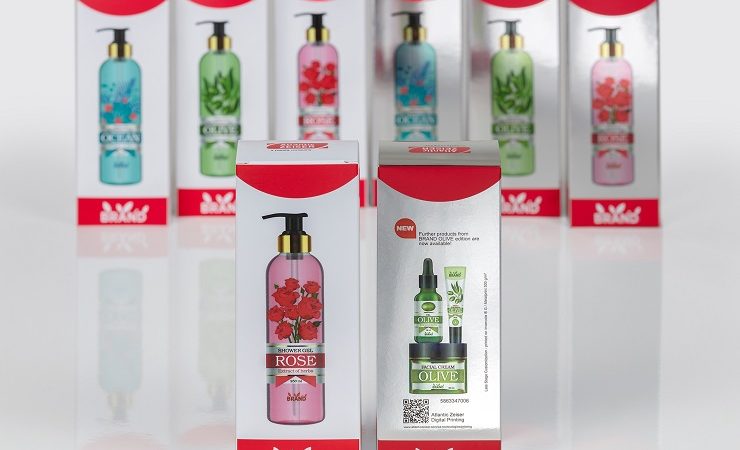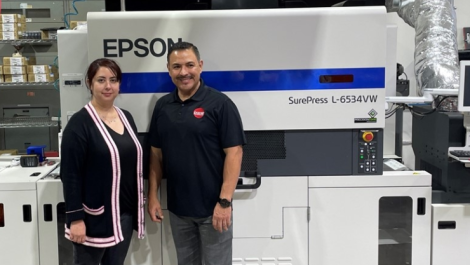A development project undertaken by Atlantic Zeiser, together with the ink experts at Tritron, and Actega – specialist in overprint varnishes –, has demonstrated how late-stage UV LED inkjet printing can be combined with analogue coating of clear varnish to reduce the complexity when producing shot runs of folding cartons.
The three companies have harmonised UV LED ink with offset varnish formulations in order to remove completely the limitations of late-stage customisation. This includes mitigating surface pre-treatment with corona or plasma systems, and unvarnished areas. The protective varnish applied over the offset printing ink also serves as a primer for the downstream UV LED inkjet printing.
The brilliance of the new coding varnish is said to correspond to conventional dispersion varnishes and performs equally well when being applied. It produces an unbroken protective surface on the carton that feels no different from the finish produced by other varnishes.
The high-resolution print image achieved when the UV LED ink, developed by Atlantic Zeiser and Tritron, is applied to this coding varnish, and complies with barcode grading A. It also offers ‘excellent’ adhesion, as measured by the Tesa test, and ‘outstanding’ scratch resistance according to the Erichsen testing methodology.
Two prominent pharmaceutical companies and a cosmetics manufacturer are already utilising the system pioneered by Atlantic Zeiser, Tritron and Actega.
It is noted that the dispersion varnishes available to the market currently have two shortcomings when printed by inkjet and UV LED ink; namely a lack of adhesion, scratch resistance (depending on the properties of the varnish), and inadequate print quality. Blocking out varnish is also only an appropriate option for small coding surfaces. If an entire side of a carton is to be individualised, which is one of the goals of genuine late-stage customisation, the result is ‘visually unappealing’ according to Atlantic Zeiser, with a large area of the carton lacking gloss, brightness and the side concerned being unprotected. The alternative use of corona or plasma systems to pre-treat varnished surfaces do not allow flexibility, process reliability and efficiency.
The option developed by Atlantic Zeiser, Tritron and Actega has created an ‘economically sound proposition’, available to both brand manufacturers and printers. It delivers superior monochrome and four-color print quality, at speeds up to 60m/min.



